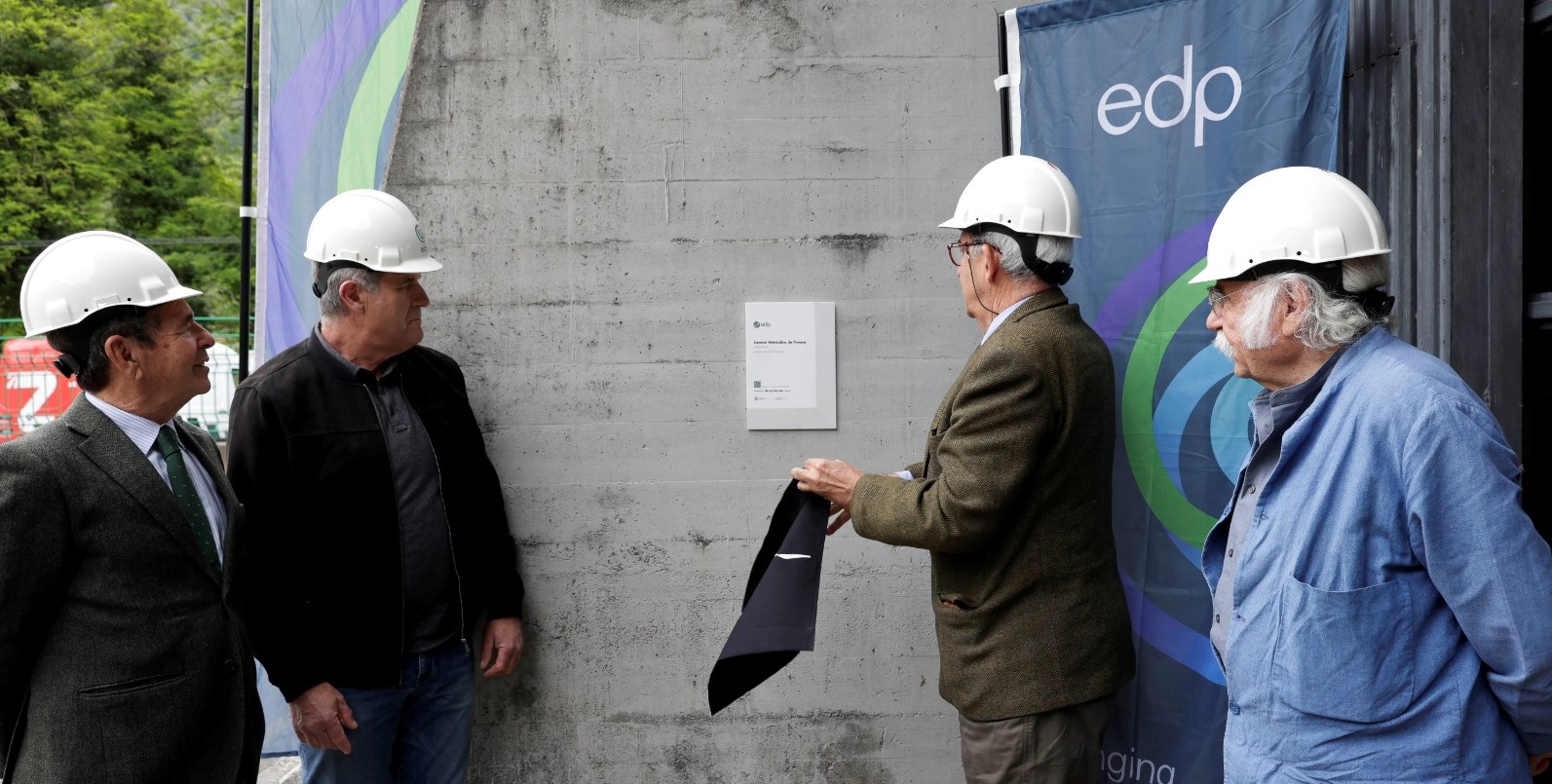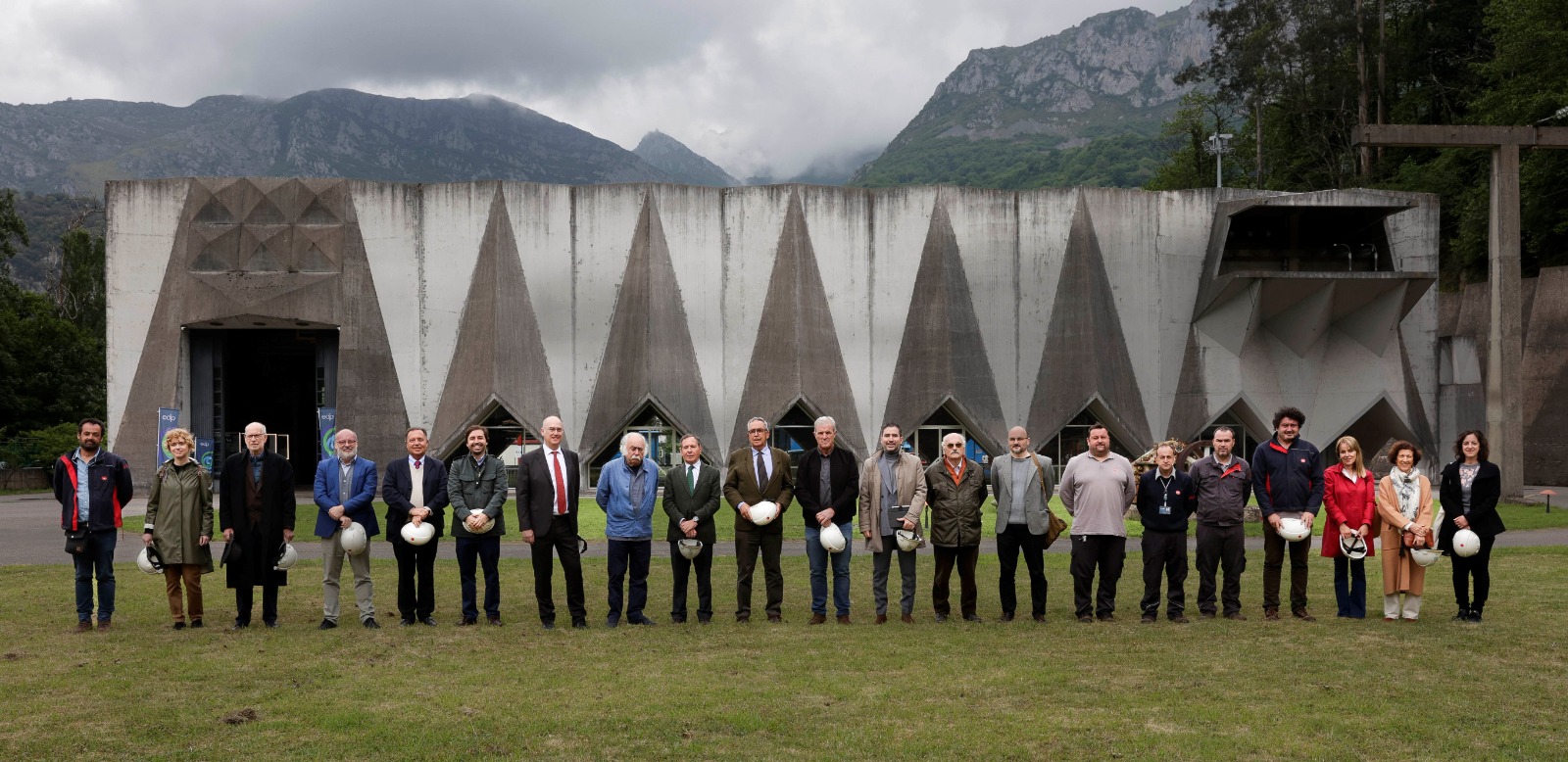
EDP’s hydroelectric power plant in Proaza, acknowledged by the Docomomo Ibérico Foundation

The energy company receives a badge certifying that the plant is part of the “architecture of the industry” registry
EDP’s hydroelectric power plant in Proaza, designed by Joaquín Vaquero Palacios, is now part of the registry of the Docomomo Ibérico Foundation. This foundation represents the international organization in Spain and Portugal, that aims to inventory, disseminate and protect the architectural heritage of the modern movement. To make this inclusion official, the hydraulic installation of the energy company has hosted an event to place a badge certifying it.
The building is part, within the catalog of the Docomomo Foundation, of the registry “The architecture of the industry”, in which there are 183 works in total. Among them, the village of Ribera de Arriba, the great winery of Tío Pepe, in Jerez de la Frontera, or the hangar and workshops of the Adolfo Suárez Madrid-Barajas Airport.
The award ceremony was attended by the Mayor of Proaza, Jesús García; the Councilor of Culture of the City Council of Proaza, Nerea Díaz; the President of the Docomomo Ibérico Foundation, Celestino García; the Director of Institutional Relations of EDP Spain, Luis Álvarez; the Director of Hydroelectric Power Plants and Energy Management of EDP Spain, Emilio Fernández; and the Dean President of the Official College of Architects of Asturias (COAA), Miguel Casariego.
Built between 1964 and 1968 to provide a solution for the Proaza waterfall, EDP’s plant has more than 250,000 operating hours and more than 4,200 GWh of 100% renewable energy generated, equivalent to the average annual consumption of more than one million homes. 1979 was the year of highest production, when the plant generated 124 GWh.
As the Docomomo Foundation website reports, Vaquero Palacios’ intervention in the hydraulic power plants is a unique example in Spanish architecture. The one in Proaza can be considered as the one that most clearly integrates engineering, architecture, painting and sculpture.
The very simple structure offers an enclosure solution with a broken and developable surface, which provides great rigidity to the structure to counteract the longitudinal and transversal thrusts of the bridge crane. At the same time, it presents a very moving aspect of planes that achieve a great landscape integration. On one of the outer end walls of the plant there is a large panel composed of 16 concrete reliefs, consisting of schematic interpretations of signs of antiquity.
Inside, there is a central space with double height. The alternators, located on the first floor, are authentic sculptures surrounded by six murals depicting electrical motifs and magnetic fields.
55 years after its commissioning, the plant continues to operate at full capacity, thanks to EDP’s continuous investments and the involvement and dedication of the people who work there.
The work of Vaquero Palacios extends to more EDP facilities in the region: the company’s corporate headquarters in Oviedo, the Carrió substation, the Aboño power plant, and the Salime, Tanes and Miranda hydroelectric plants.
Docomomo is the acronym of Documentation and Conservation of buildings, sites and neighborhoods of the Modern Movement, an international organization created in 1990 with the aim of studying and documenting the architecture of the modern movement in order to achieve its recognition as part of our 20th century culture, its heritage protection and conservation.
To achieve this purpose, it has been essential to detect which buildings constitute this heritage, to know the circumstances that gave rise to them, to document the projects that generated them and to evaluate their current conditions. This work constitutes the DOCOMOMO Ibérico Registry, in which there are around 1,200 works.
The protection of the environment and the conservation of its facilities is a hallmark of EDP, whose strategy is governed by the ESG (Environmental, Social and Governance) dimensions. The company plans to invest 25 billion euros in the period 2023-2026 in three main lines of action: accelerating the deployment of more renewable energies, providing greater flexibility to the electricity system, and supporting its customers in the transition to a more sustainable and decarbonized world. With this plan, EDP will achieve its ambitious goal of being the first 100% green big energy company by 2030.


